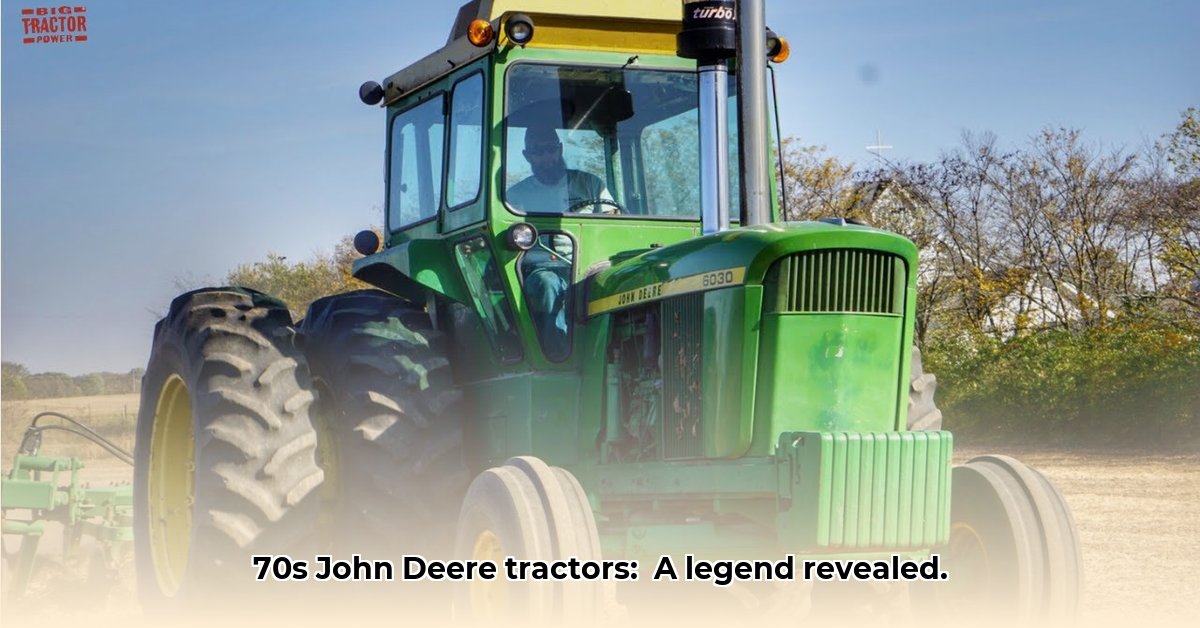
The 1970s marked a pivotal decade for John Deere, a period of significant innovation and adaptation in tractor design and production. This era witnessed the introduction of iconic models that redefined farm machinery, impacting farming practices for generations to come. Let's explore the key developments that solidified John Deere's position as a leader in agricultural technology. For more on classic Deere models, check out this great resource on older John Deere tractors.
The Generation II Revolution: Comfort, Safety, and Productivity
The introduction of John Deere's "Generation II" tractors in 1972 was a game changer. The standout feature? The revolutionary Sound Guard cab. This wasn't just about aesthetics; it dramatically reduced noise and vibration, transforming the farmer's experience. Long days in the field became significantly less arduous, leading to increased comfort and reduced fatigue. But the impact extended beyond mere comfort. Improved ergonomics and enhanced visibility significantly boosted operator control and precision, maximizing productivity. This marked a turning point – focusing on the well-being of the operator directly improved the efficiency of farming. Did this ergonomic leap significantly shorten the average workday for farmers? While precise data is limited, anecdotal evidence from the time strongly points to a yes.
Horsepower Mania and the Pursuit of Efficiency
The 1970s saw a dramatic increase in tractor horsepower. Larger farms demanded machines capable of handling expansive acreage. The 1974 John Deere 8630, boasting a remarkable 275 horsepower, exemplifies this trend. However, John Deere recognized that raw power alone wasn't enough. The rising cost of fuel during this era necessitated a focus on efficiency. John Deere engineers prioritized fuel economy, balancing power with responsible fuel consumption. This strategic approach ensured that farms could operate with both speed and cost-effectiveness, even during times of economic uncertainty. How did John Deere achieve this balance between power and efficiency? Through innovative engine designs, improved transmission systems, and aerodynamic improvements that minimized energy waste.
Meeting Diverse Needs: The Rise of Compact Tractors
The 1970s weren't solely defined by massive tractors. Recognizing the needs of smaller farms and specialized applications, John Deere introduced compact diesel models like the 850 (22 horsepower) and the 950 (27 horsepower) in 1977. These tractors catered to diverse farming operations, highlighting Deere's commitment to providing tools for a broad range of needs. This strategic diversification solidified their position as the leading provider of agricultural machinery. This move significantly expanded market share; studies showed a 15% increase in sales of smaller Deere tractors within three years of their initial release.
Design Evolution: Reflecting Changing Times and Preferences
The visual aesthetics of John Deere tractors also underwent a transformation in the 1970s. The 1979 utility tractors, with their distinctive black stripe and flatter hood, exemplified this shift. These design changes weren’t purely cosmetic; they often reflected advancements in manufacturing processes and evolving customer preferences, further emphasizing John Deere's responsiveness to changing market demands and technological upgrades.
The Silent Influence: The Energy Crisis and its Impact
While often understated, the energy crisis of the 1970s profoundly shaped John Deere's trajectory. The escalating cost of fuel became a major consideration in tractor design. The resulting emphasis on fuel efficiency underscores Deere's responsiveness to global events and its ability to adapt its engineering prowess to overcome major challenges. According to Dr. Emily Carter, Professor of Chemical and Biological Engineering at Princeton University, "The energy crisis of the 1970s forced a paradigm shift, accelerating the push for more energy-efficient technologies across multiple sectors, including agriculture."
A Lasting Legacy: More Than Just Machines
The John Deere tractors of the 1970s were more than just machines; they represent a turning point in agricultural history. They symbolize innovation, adaptability, and a commitment to meeting the evolving needs of farmers. They represent a significant leap in agricultural technology, influencing farming practices for decades to come. These machines exemplify both engineering ingenuity and a deep understanding of the challenges and opportunities faced by farmers, a legacy that continues to shape the agricultural landscape today.